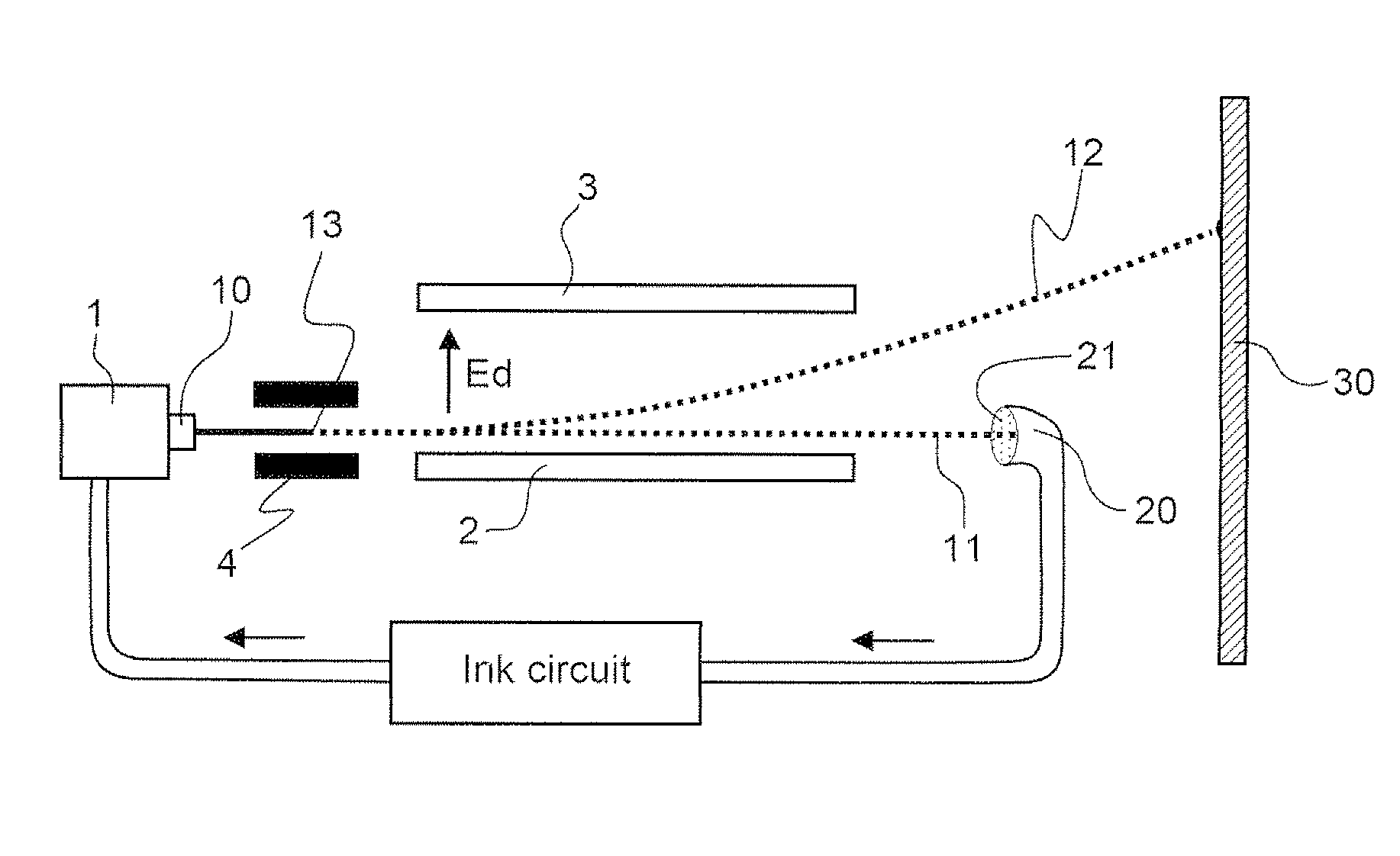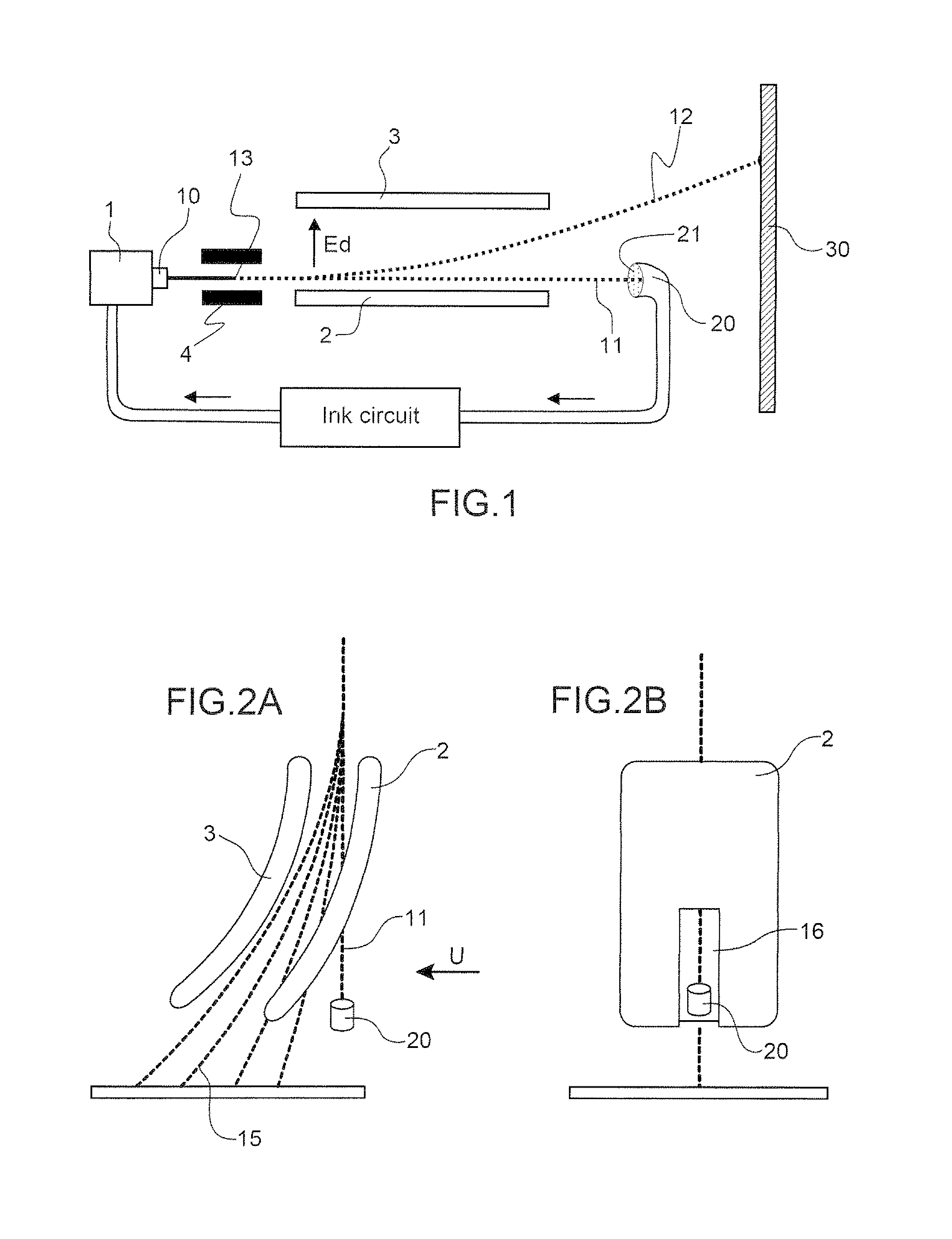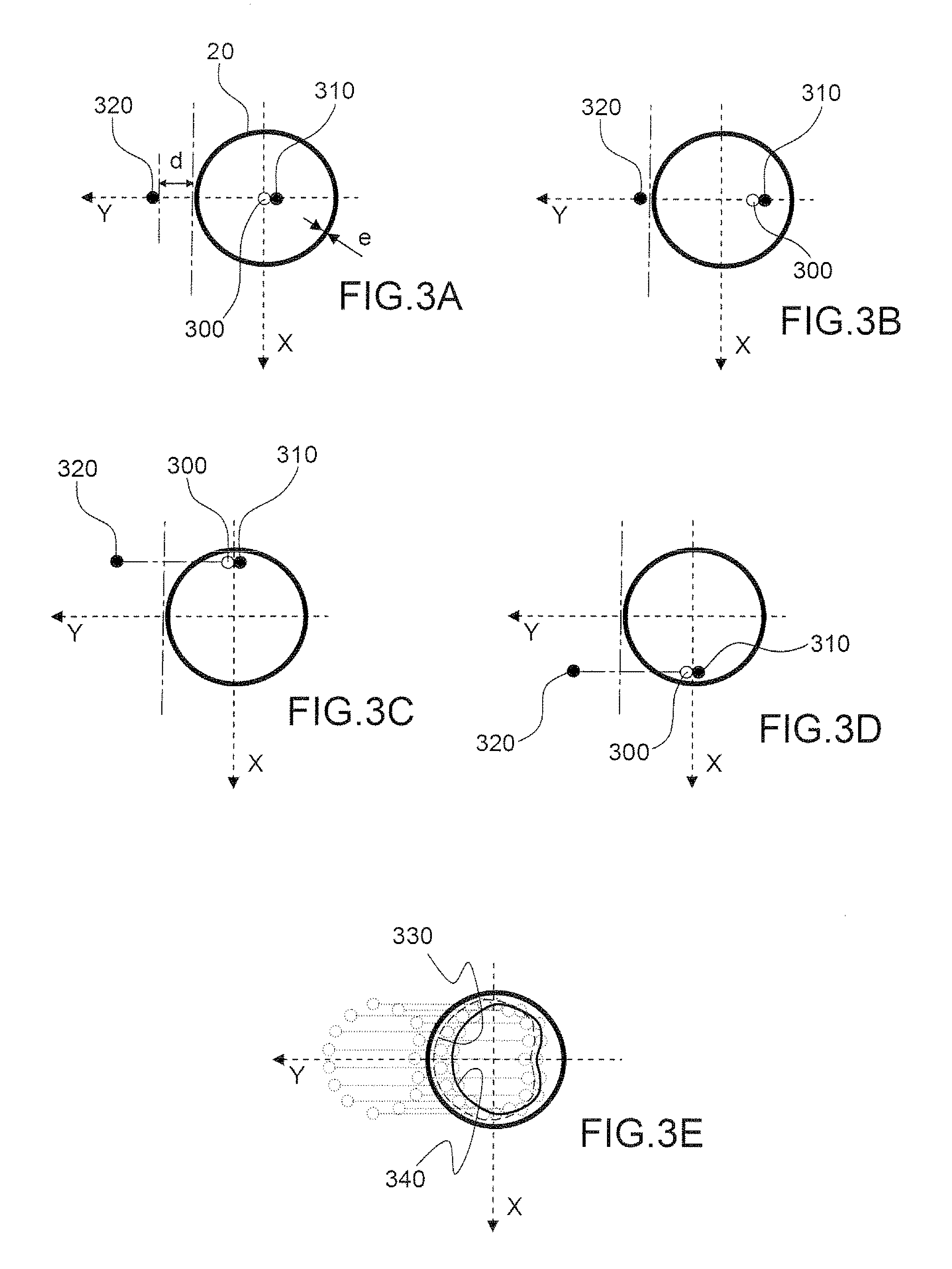Directly detection device of trajectories of drops issuing from liquid jet, associated electrostatic sensor, print head and continuous ink jet printer
a technology of direct detection and drop issuing from liquid jet, which is applied in the direction of printing, electrostatic field measurement, instruments, etc., to achieve the effect of easy perturbation
- Summary
- Abstract
- Description
- Claims
- Application Information
AI Technical Summary
Benefits of technology
Problems solved by technology
Method used
Image
Examples
Embodiment Construction
[0100]FIGS. 1 to 2B relative to a print head using deflected continuous ink jet technology according to the state of the art have already been commented on in the preamble, and are not explained here further in terms of the functions of the different means.
[0101]The problem with which the inventors have been confronted is the following: theoretically, the trajectory of non-deflected drops referenced by 11 in these FIGS. 1 to 2B is unique and passes through the centre of the inlet 21 of the recovery gutter 20. In fact, as indicated in the preamble of the application, it can eventuate at any instant during printing that the non-deflected drops take different trajectories around this nominal trajectory. This may be due to manufacturing and assembly tolerances of the different functional means of the head, or to the random conditions for setting up the jet at start-up of printing or likewise to progressive fouling, for example of the ejection nozzle, which results in slow change of the ...
PUM
 Login to View More
Login to View More Abstract
Description
Claims
Application Information
 Login to View More
Login to View More - R&D
- Intellectual Property
- Life Sciences
- Materials
- Tech Scout
- Unparalleled Data Quality
- Higher Quality Content
- 60% Fewer Hallucinations
Browse by: Latest US Patents, China's latest patents, Technical Efficacy Thesaurus, Application Domain, Technology Topic, Popular Technical Reports.
© 2025 PatSnap. All rights reserved.Legal|Privacy policy|Modern Slavery Act Transparency Statement|Sitemap|About US| Contact US: help@patsnap.com



